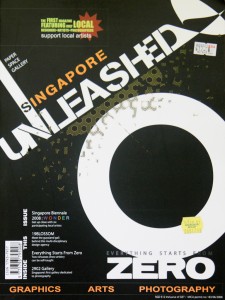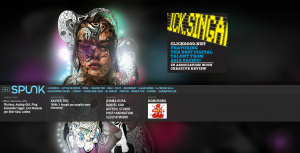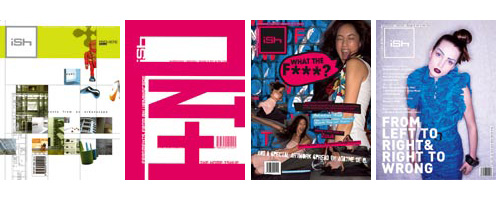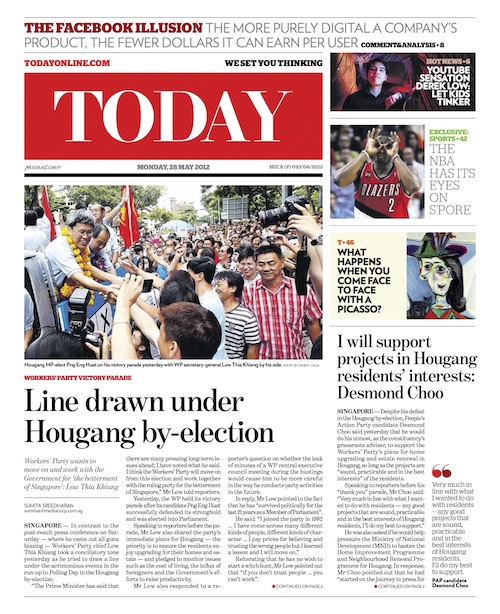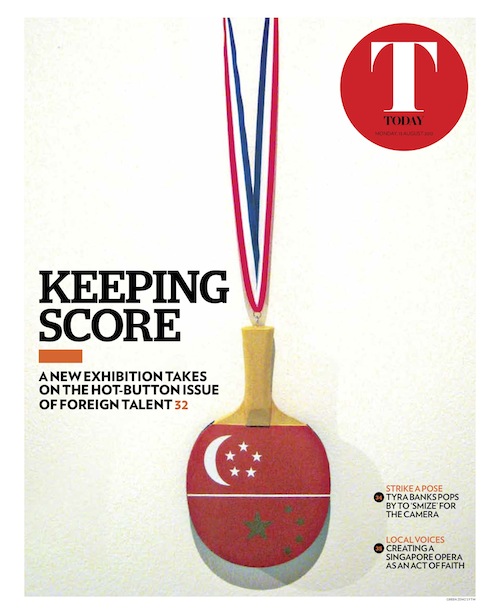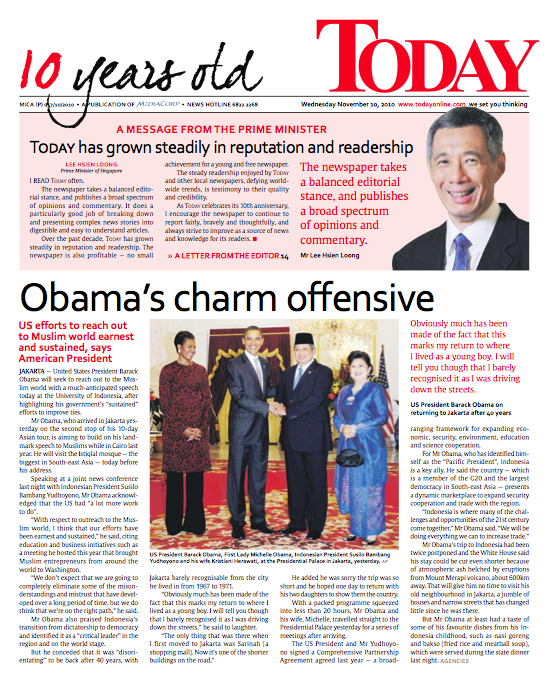Singapore editor Andrew Loh is building spaces for all online, first with socio-political news website The Online Citizen and now publichouse.sg
At the age of 45, he has finally found his calling.
For some two decades, Mr Andrew Loh didn’t know what to do in life. He sold insurance, served as a waiter, opened a restaurant, taught yoga and even tried out as a rag-and-bone man, but he never stayed long in any of these jobs.
That is until he started blogging. What started as a means to voice his opinions and ideas has become his career. For the last four and a half years, Loh has worked full-time on The Online Citizen (TOC), an independent alternative media outlet in Singapore.
It all started in December 2006. Frustrated with what he thought was unfair coverage of the General Elections by the country’s mainstream media, he got together with fellow bloggers Choo Zheng Xi, Gerald Giam and Benjamin Cheah to start TOC as a platform to express their views on Singapore society. They had no “big plan” nor knew anything about publishing, but they have created what is regarded today as one of the leading alternative media for socio-political news in Singapore. Last year, the site received an average of 20,000 to 30,000 views a day, and currently, TOC’s Facebook page has received over 45,000 ‘Likes’.
Despite its politically charged beginnings and reputation, TOC did not set out to be so, says Loh who was its co-editor before taking over as Chief Editor in 2009. Pointing to TOC’s tagline which he came up with, “A community of Singaporeans”, he says: “Like what the tagline says, it was supposed to be a hothouse for different interests and people to come on the same platform. It wasn’t just for a community of politicised Singaporeans.”
A huge reason for its current popularity is its anti-government editorial stance and willingness to champion causes in a tightly-controlled city-state, including fighting for the homeless and abolishing the state’s death penalty. But Loh also points out that its following is nothing compared to what the mainstream media commands, and its controversial reputation is also limiting its inclusiveness. “When you’re perceived as political, people steer away from you,” he explains.
It was this desire to create an inclusive space online that drove Loh to set up publichouse.sg in August this year. He embarked on it after resigning from TOC in June after disagreements with the team. Loh declined to say more, only that both parties have since moved on. Instead, he is eager to introduce publichouse.sg, a website that features inspiring stories of people and communities in Singapore. Comparing it against TOC, he said: “Publichouse.sg is not a political website, it’s a people’s website. I wanted to move away from being always negative and finding fault. This is something that not just I think, but others have told me about TOC,” he says. “It was very tiring inside to be honest.”
What kept Loh working on TOC all these years — surviving financially only on his savings and what little the website got through advertising and donations — was not the site’s fiery opinions against the state, but the stories it published of ordinary people struggling in society. One of his most memorable TOC story was the series they did last year on “beach communities” in Singapore. A tip-off led Loh and his team to discover a community of homeless people living in Singapore’s public parks and beaches. TOC doggedly pursued the story for months, exposing how these people had fallen through the state’s public housing policies. The issue quickly caught the attention of the mainstream media and the authorities.
“A lot of people do charity work to help others, but maybe my contribution is being able to tell their stories through writing. I can’t take care of the elderly in a nursing home, I’m not programmed that way, but I can tell stories,” he says.
BUILDING A HOUSE FOR THE PUBLIC
Five years ago, Loh never thought he would be running his own website. He was running a restaurant with his brother when he started TOC, but unlike his previous jobs, Loh enjoyed this one so much that he left the business to work on the website full-time.
Looking back, he says that this passion for publishing probably comes from his love for current affairs that began when in his 20s. He only studied until his O-Levels, but grew up reading magazines like Time and Newsweek and listened dutifully to his small radio with a long antennae as the BBC brought him breaking news of a changing world in the late ‘80s, from the unfolding conflict in the Middle East, the Tiananmen Square protests, to the fall of the Berlin Wall.
Never being able to settle in a job has also turned out to be a blessing in disguise, he says. By trying anything that came along the way, Loh met people from all walks of life. “When I look back now, all this adds up to what I am doing, I can empathise with the people at the lower end of society when I do stories about them,” he says.
While he was passionate about TOC, running it wasn’t easy. The biggest challenge was not pressure from the government because of its critical stance, as many would think, he says. In fact, Loh says they never heard from the government until this year when they were gazetted as a political association. This meant that the website had to register names of people who would bear responsibility for it, and TOC was also barred from receiving funds from foreign donors or letting foreigners take part in its events.
Rather, Loh says it was tough running a small-time newspaper with little experience and expertise. Early in the site’s history, the team ran into sagas including accusations of being a media vehicle for an opposition political party. This arose because Loh was TOC’s co-editor and also a member of The Workers’ Party. In 2008, Loh resigned from the party to put the matter to rest, although he adds that he was unhappy too.
TOC trudged on and grew in readership because of the help and support of volunteers, says Loh. “In my years there, we had some 400 plus volunteers writing pieces and supporting us. This is something I am proud of, that Singaporeans are not afraid to help us.”
But relying on volunteers is also one reason why websites like TOC have been looked upon suspiciously as part of a “cowboy town” in the online space, where only those in society’s fringes lurk. Loh disagrees, instead, he thinks Singaporeans are just not used to hearing from a diverse community. But he does agree that the online space is young and still lacks a certain level of maturity. “If you read online, it’s as if the government is wrong about everything,” he says.
With a younger generation that is more expressive and less fearful, Loh thinks Singapore will have to learn how to deal with the mess of opinions. He also feels strongly that Singapore needs a professionally-run alternative media site such as Malaysiakini, The Malaysian Insider and The Nut Graph in Malaysia. Neither TOC nor publichouse.sg qualify because both do not have the necessary resources and expertise. Sounding exasperated, he says: “We have a lot of ex-journalists and very smart people in the media industry, but why are they not starting something like that? Maybe they find it financially unsustainable or they are fearful, but I really hope there will be such a site.”
After five years of learning how to publish online, Loh is realistic about what his websites can achieve. While he believes that alternative online outlets are important because the mainstream media is controlled by the government, he admits that most Singaporeans still trust less what they read online. He also cites a recent report by The Institute of Policy Studies, a think-tank in Singapore, which concluded that despite the flurry of activities online, the Internet had little impact on the results of the state’s recent elections too.
But for Loh, creating and running online spaces like TOC and publichouse.sg have certainly changed his life and views about the community around him. “Having worked with people in the lower strata of society, you realise that no matter how hard their lives are, they carry on. You ask yourself: ‘If his life is ten times harder than yours, what gives you the right to sit on your butt and complain?’”
“If you really care about these people, the issues, and the policies that affect them, then do something. That’s where I am coming from,” he says.
———————————
A feature written for FIVEFOOTWAY magazine’s issue on EVERYONE.
